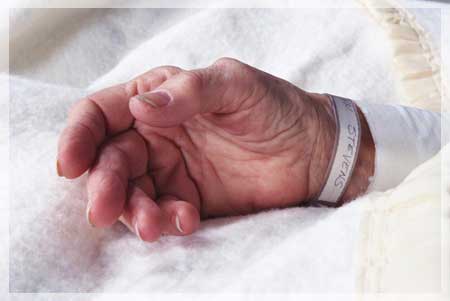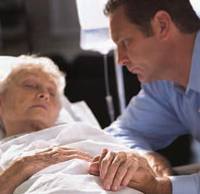Physician Assisted Suicide and Euthanasia

Death, please. Assisted Suicide and Euthanasia- looking for the end of life
Charlie slowly wheeled himself down the corridor of the nursing facility. He stopped periodically to peer into a friend’s room, exchanging a word about the latest politics and last night’s ballgame. He was excited. Today was the day that the kids were coming from the local church to visit and it was always good to see the young faces and feel the exuberance. Yes, he was dying and he knew this. Every part of his body told him so. His doctors were honest and to the point and presented him with all the options. He was dying, but happy and grateful for his final upcoming days, however many they would be. He certainly was not willing to let a little suffering get in the way of his remaining days on earth.
Just what options were presented to Charlie? Many have engaged in this conversation, weighing the positives and negatives of ending a life prematurely. Assisted suicide and Euthanasia have attracted national attention as arguments for and against the practices have sought to seek the upper hand in the issue of legalization in the United States. How does one decide to end their life and under what circumstances must those in the medical field, who have sworn to uphold human life, choose to willingly end it? In a battle that has compassion as the main argument of both sides, the issues of assisted suicide and euthanasia will certainly continue to hold the attention of the world’s population. Even among Hubpages you will find advocates on both sides of the issue, from syzygyastro in Ethical Questions about Euthanasia to broussardleslie in Human Euthanasia.
Assisted Suicide- a personal account
Before discussing the issues of assisted suicide and euthanasia to a greater degree, first definitions of each must be presented. In fact, many of the key arguments in support of these end-of-life issues come down to the differences between the two methods. Assisted suicide is defined as “suicide accomplished with the aid of another person, especially a physician” (The American Heritage Dictionary, 2006). Euthanasia, though ultimately achieving the same end as assisted suicide, reaches it by a different mean. Euthanasia is “the act of practice of ending the life of an individual suffering from a terminal illness of an incurable condition, as by lethal injection or the suspension of extraordinary medical treatment” (The American Heritage Dictionary, 2006). The difference between the two methods lies in whom exactly is performing the actions leading to suicide. With assisted suicide, the individual wishing to die administers the means necessary to cause that death, while euthanasia requires the direct actions of an outside source, usually a physician.

Although already legalized in other countries, including the Netherlands, assisted suicide was brought to the forefront of the American attention by the passing of an act that legalized the method of suicide for those dealing with extraordinary end-of-life issues. The state of Oregon, on October 27, 1997, enacted the Death with Dignity Act, thereby permitting terminally-ill residents of the state to end their lives through the “voluntary self-administration of lethal medications, expressly prescribed by a physician for that purpose” (State of Oregon, 2008). Supporters of the act have lauded the Oregon law for its intention to uphold the respect for the autonomy of individuals. Simply put, autonomy is relying on a person’s ability to make decisions for his or her own self, and in the case of assisted suicide, decisions concerning what will happen to his or her own body. According to Gill (2005), an environment in which an individual has more choices is by nature better and more supportive of promoting autonomy than an environment in which choices are limited. For the purpose of autonomy, as long as there is the presence of capability to mentally handle the task of such a magnanimous decision as the ending of one’s life, the individual should be allowed to make this decision. Frequently, a utilitarian position is taken to support the use of assisted suicide and euthanasia. The utilitarian standpoint, which is also referred to as the Greatest Happiness would refer to, of course, the unhappiness that end-of-life suffering would bring and the futility of the attempt to live with that suffering. Advocates of assisted suicide base their arguments on the opinion that allowing an individual the choice to end life gives that individual a dignified, honorable, and respectful death, rather than a painful experience of uncontrolled suffering.

Assisted suicide is, however, suicide. This charged term has long held serious moral implications. Naturally, there are many who stand in opposition to assisted suicide and euthanasia, but not because they are afraid of grave punishment from a higher power for those who choose to end life. Compassion and mercy are words that have been used to support the case of those who feel that assisted suicide should be an option for the mentally capable but terminally ill. Likewise, these words also describe the efforts of those who feel that ending life prematurely is wrong. A recurrent message in the opposition argument is the protection of the socially and economically disadvantaged. It is the concern that, behind the guise of autonomy, those who may choose the option of assisted suicide may not be doing so out of an informed decision process, but because of external circumstances including poverty and lack of insurance. Individuals in these circumstances may experience social stigma and succumb to a decreased sense of entitlement to medical means. Furthermore, assisted suicide could lead to a slippery slope in which individuals having membership in a stigmatized social group, including but not limited to women, ethnic and sexual minorities, persons living with disabilities, and the elderly, may be pressured, however subtly, into assisted suicide (End-of-Life Care Issues, 2001). Many in support of assisted suicide cite the individuals direct request for death, but this freedom may be based on assumption that when severely disabled, this concept exists.
Jack Kevorkian- right or wrong?
In a study by Amundson & Taira (2005), interviews were conducted with disabled individuals who experienced a change in their viewpoints on assisted suicide after becoming disabled themselves. One interviewee, whose disabilities prevented her from gesturing or talking, shared an experience after hearing a dialogue between her caregivers. One of the health care professionals, who assumed the disabled individual could not mentally process what was being said, commented to another professional that she would prefer death to the state of the patient if in that situation:
"I suddenly realized (with a shock) that I had completely missed a crucial aspect of the physician-assisted suicide issue. I had incorrectly assumed that the individual making the choice would be free from coercion and would be making a choice based on his or her own interests, free from the forced perspective of others. I had assumed that the choices being offered were indeed legitimate choices. Talk about fatal assumptions! Sitting in the wheelchair in that elevator, I realized exactly how fatal that assumption is: The very people whose job it was to care for me believed that I would be better off dead, and I was powerless to argue against them."
This profound statement raises the question; is the patient really in control of end-of-life decisions? In reality, how much influence do physicians and family members have on the choice, after factoring in the high cost of medical treatment and the possible burden placed on family members and caregivers? These questions are indeed troubling, especially since the bulk of the argument in support of assisted suicide, and in some cases, euthanasia, are based upon the concept of autonomy.

It is the opinion of this writer that assisted suicide and euthanasia are inherently wrong. In a case such as this, dealing with issues of life such as these, it is impossible to divorce the prominent Catholic beliefs that form the conscience. It is not up to the individual when life ends, but indeed, up to God Himself. In the examination of one’s life, it is interesting to note that learning and growth, physically, mentally, and psychologically, often occur in times of pain, suffering, and crisis. The concept of suffering can be, through the proper spiritual outlook, embraced as an opportunity to not only learn and grow as an individual, but provide onlookers and the opportunity to grow through the role of caregiver and supporter. Beyond this issue of religious morality, it is the fear of the writer that the true intentions of the patient may not be known, or may be masked or influenced by physical, mental, or psychological condition. Furthermore, the possibility, though currently not empirically present, for abuse by socioeconomic status does exist and could quickly foster conditions suitable for slippery slope, in which those with undesirable conditions, including medical conditions, could be terminated against their will.
What do you think?
Are Assisted Suicide and Euthanasia acceptable ways to end a life?
References
assisted suicide. (n.d.). The American Heritage® Dictionary of the English Language, Fourth Edition. Retrieved April 28, 2008, from Dictionary.com website: http://dictionary.reference.com/browse/assisted suicide
euthanasia. (n.d.). The American Heritage® Dictionary of the English Language, Fourth Edition. Retrieved April 28, 2008, from Dictionary.com website: http://dictionary.reference.com/browse/euthanasia
No Author Listed, (2008). State of Oregon: Death with Dignity Act. Retrieved April 28, 2008, from Oregon.gov Web site
Gill, M.B. (2005).A moral defense of Oregon's physician assisted-suicide law. Ethics and End of Life Issues. 10(1), 53-67.
Tulloch, G. (2005).A feminist utilitarian perspective on euthanasia: From Nancy Crick to Terri Schiavo. Nursing Inquiry. 12(2), 155-160.
No Author Listed, (2001). End-of-Life Care Issues. Retrieved April 28, 2008, from APA Public Interest Web site: http://www.apa.org/pi/eol/arguments.html#2
Amundson, R. , & Taira, G. (2005). Our lives and ideologies: The effect of life experience on the perceived morality of the policy of physician-assisted suicide. Journal of Disability Policy Studies. 16(1), 53-57.







